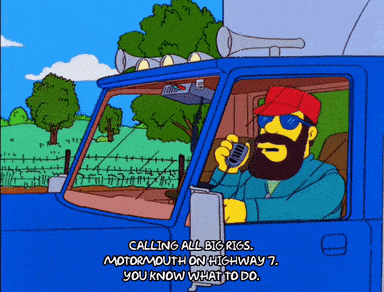The Simpsons: How Homer Became A Jerk In Season 10

Let’s be clear -- Homer Simpson was never a model father, spouse, employee, or community member.
He was lazy, not that bright, occasionally irate at his son, and he often disappointed Marge and Lisa. But he was generally well-intentioned, and above all else, he loved his family.
Then came the shift. Around the time The Simpsons entered Season 10, the character evolved into someone fans called Jerkass Homer.
Don't Miss
How is Jerkass Homer different from Original Homer? To put it simply, he got meaner: Yelling at strangers, deliberately hurting others, generally being full of himself, and refusing to be accountable for his actions. The name “Jerkass” comes from Homer himself, after the name he screams at randos in a Season 9 episode.
Examples, you say? How about Season 10’s Maximum Homerdrive, an episode where Homer:
* Boasts about his incredible eating prowess
* Takes on a stranger in an eating contest and accidentally kills him
* Takes over the dead guy’s trucking job and generally ruins things for everyone in town

Gracie Films
* Acts like such an obnoxious jerkass that all of the other truckers want to kill him

Gracie Films
This was the late 1990s, well before social media existed. But the outcry from viewers, posted to Simpsons online message boards, was loud enough for the show’s writers to hear. “Sometimes the fans get it right,” admits writer Mike Reiss in his book Springfield Confidential. “They are especially sensitive when we write Homer too mean—a syndrome they call Jerk-Ass Homer. They say it and we listen.”
But did the writers actually listen? Many fans would argue no -- that Homer changed and remains a jerkass to this day.
Which leads to the question: Why? Why did the show’s writers make the seemingly conscious choice to turn Homer into an entitled, invincible bully who does and says whatever he wants?
Our theory is based on the show’s 33 seasons and counting.
By year 10, Simpsons writers had already cranked out well more than 200 episodes, each one containing 3-4 plots involving Springfield’s finest. While early episodes focused on more mundane family matters -- How will we pay for Lisa’s braces? Can Homer help Bart build a soapbox car? Can Homer learn to get along with next-door neighborino Ned? -- a need for fresh storylines forced writers to turn away from domestic plots.
Post Season 10, we see Homer befriending Mel Gibson, becoming a restaurant critic, joining a motorcycle gang, going on an African safari, becoming addicted to medical marijuana, teaching taunting to professional athletes … you get the idea.

Gracie Films
And those plots necessitated an evolution of Homer’s personality -- you don’t take on all of these outrageous jobs and adventures without a little more oblivious pomposity. And because stories (and comedy) need conflict, Homer got into more stupid fights with more strangers than ever before.
Another theory blames Mike Scully, who ran the show from Season 9 through 12. This run put Homer front and center more often, usually in ridiculous situations as described above. Scully took over just as several classic Simpsons creators left the show, leaving him in the unenviable position of working with new writers who may have had a slightly different Homer voice in their heads. Whatever the reason, Scully’s run is criticized for making the transition from heartfelt stories to anything-for-a-gag cartoons.
Jerkass Homer seems to have faded into the background over the past decade, but only because Bart, Lisa, and Maggie have become the show’s focus. Lucky for us, the original guy from those first nine seasons is always waiting on Disney+ and worn-out DVDs.

Gracie Films
For more ComedyNerd, be sure to check out:
15 Comedy Movie Lines We Didn’t Know Were Improvised
Reno 911: 15 Jokes For The Hall Of Fame
5 Hilarious Times Comedians Could Not Understand Technology
For ComedyNerd exclusive content and more, subscribe to our fancy newsletter:
Top image: Gracie Films
